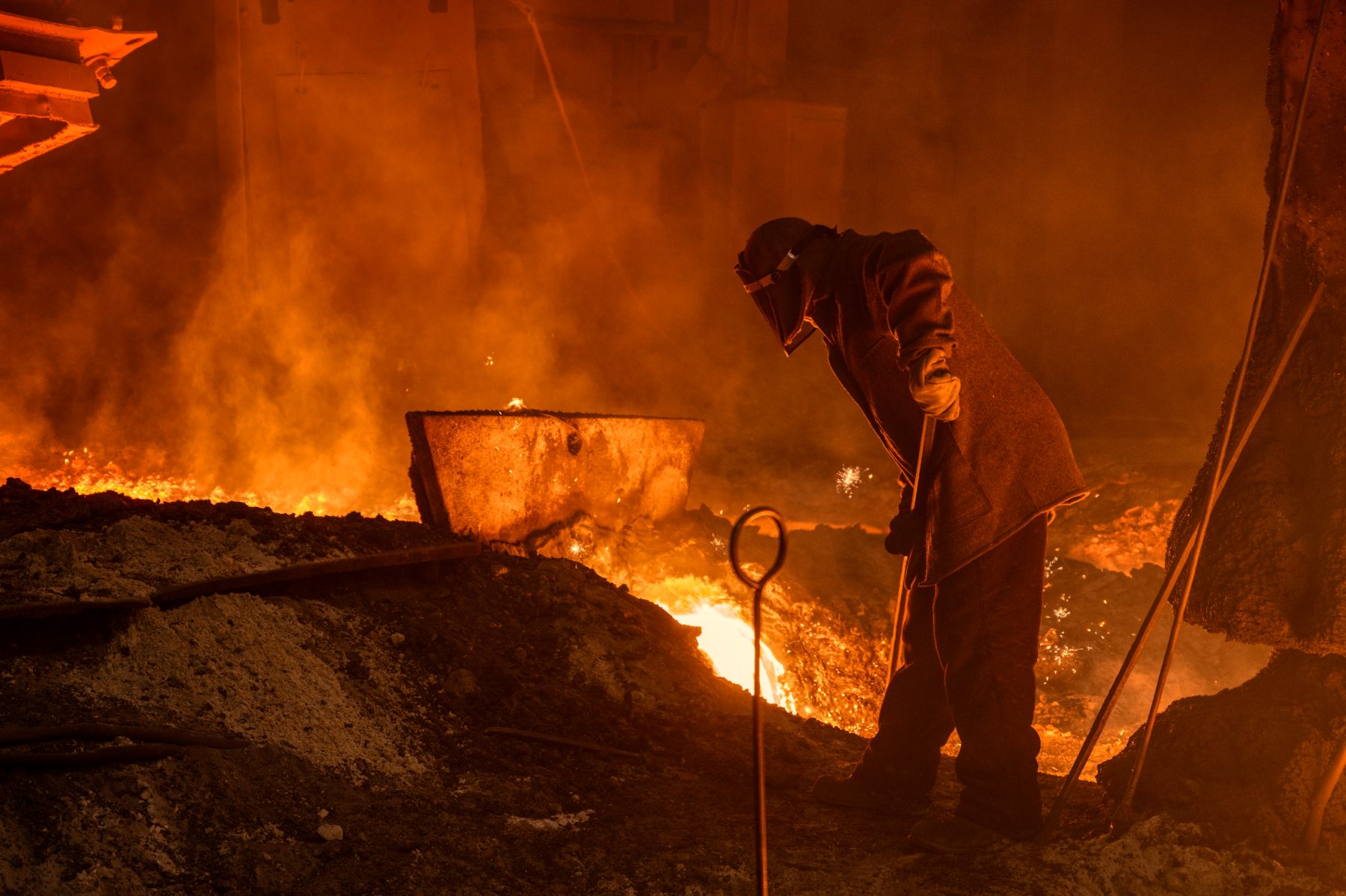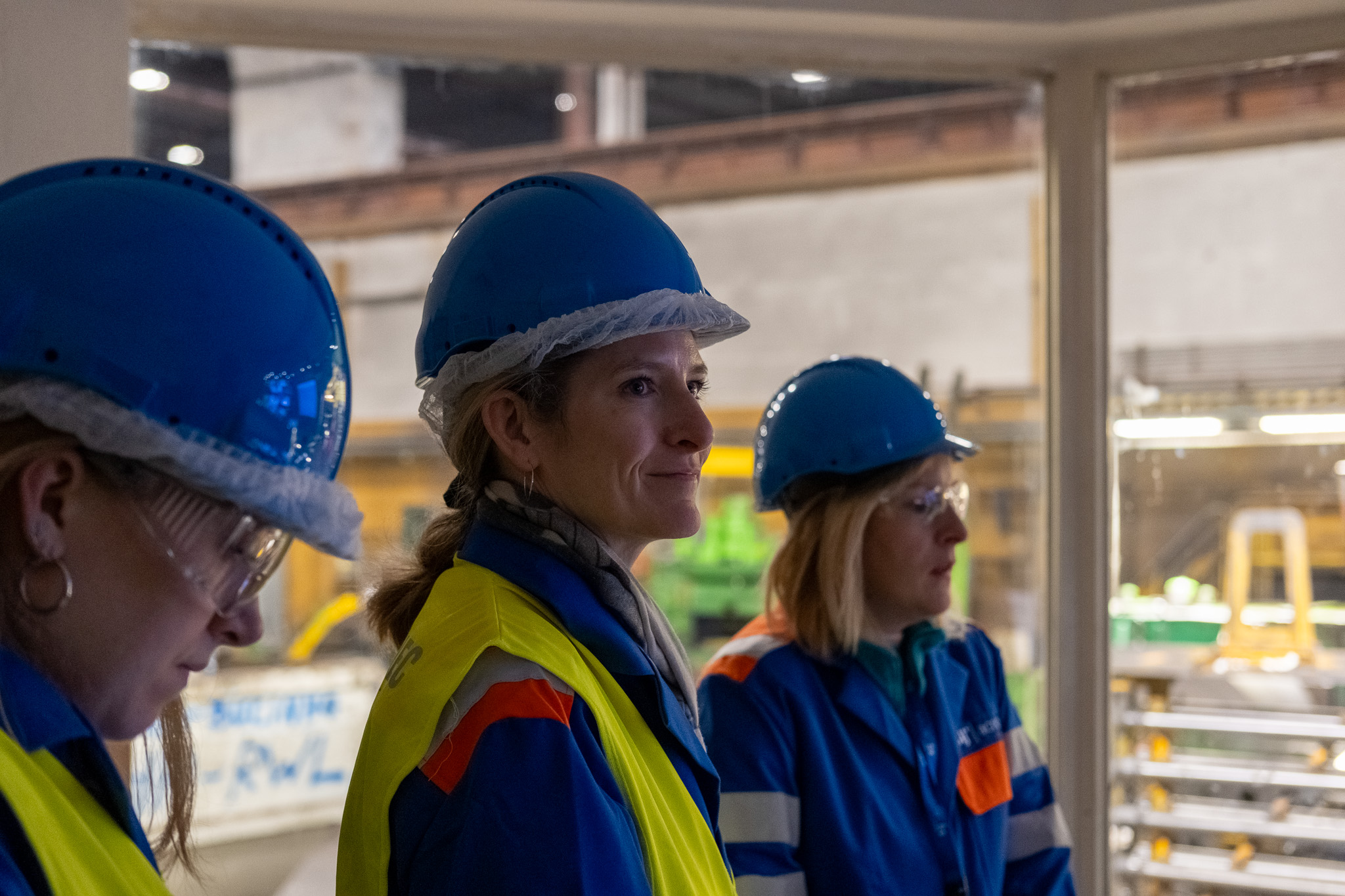We’re shaping a more responsible steel industry.
We have the opportunity to do things differently
ResponsibleSteel is a global, not-for-profit organisation created to maximise steel’s contribution to a sustainable world. Working collaboratively with our members, we have developed an independent standards and certification programme for steel via a process that uses the ISEAL Codes of Good Practice as a reference. Together, we are setting the global standard for responsibly produced net-zero steel.

We’re at a pivotal moment in the steel industry
According to ResponsibleSteel's calculations using data from RMI and the International Energy Agency (IEA), the steelmaking process, from the extraction of raw materials to the production of steel, accounts for 10% of global GHG emissions. We face a collective challenge to transform the industry, reducing global emissions while ensuring a just transition for workers and local communities.
We have over 160 members working to deliver on our mission to drive responsible steel production.
According to the IEA's Net Zero Emissions Scenario, we need to reduce steel industry emissions by at least 90% by 2050, compared to 2022.
We have over 80 ResponsibleSteel certified sites globally.
Over 230,000 workers are covered by ResponsibleSteel certification.
Over 30% of furnaces covered by ResponsibleSteel certification are EAFs.
This is the future of steel
Our members are at the heart of our work
ResponsibleSteel’s membership consists of representatives from across the steel value chain, including businesses, NGOs, trade associations, and other organisations with an interest in our mission. This means our standards are uniquely shaped by multiple perspectives, and their adoption requires the support of both business and civil society members. We encourage organisations globally to join us to create lasting impact for people and the planet.








































Certified sites around the world

Latest news & events


Holding steel to a higher standard: What is ResponsibleSteel?
Steel is everywhere. It’s in the buildings we live and work in, the cars we drive, the bridges we cross, and the products we use every day. It's an essential material in the modern world and critical to the renewable energy transition.
But steel also comes with a cost. It’s a major source of emissions, contributing to 10% of global energy-related emissions, and the way it’s produced can have serious impacts on local communities and ecosystems. With growing pressure to reduce emissions, improve supply chain practices, and meet evolving regulations, the steel industry faces a huge challenge.
That’s where ResponsibleSteel comes in.
We're a global not-for-profit organisation created to maximise steel’s contribution to a sustainable world. Our mission is to be a driving force in the production of socially and environmentally responsible near-zero steel, steel that buyers and investors can get behind.
ResponsibleSteel supports:
- Steelmakers to demonstrate good practice on social and environmental issues, and measurable progress on decarbonisation
- Steel buyers and investors to make informed decisions and reduce risk in their supply chains and portfolios
Together, we have the opportunity to do things differently and support the industry's transition to a responsible, low-emission future.
What we do
ResponsibleSteel is the global standards and certification initiative for the steel industry. Working collaboratively with over 160 members from across the steel supply chain and civil society, we have developed the ResponsibleSteel International Production Standard via a process that uses the ISEAL Codes of Good Practice as a reference.
The ResponsibleSteel International Production Standard contains 13 Principles covering key environmental, social and governance issues identified and agreed upon by our members for the responsible production of steel. The Production Standard evaluates the full picture—not just carbon emissions, but also labour rights, human rights, water use, biodiversity, raw material sourcing, and other key issues that affect people and the planet.
Certification against the Production Standard combines all the complexities of good social and environmental performance in one indication. Steelmaking sites must undergo rigorous, third-party audits to become certified, ensuring that a site is meeting the highest environmental and social standards.
Certification provides steelmakers with a clear framework for improvement and helps buyers, investors, and other stakeholders understand whether a site is operating responsibly.
How it works
Certification is broken down into Core Site Certification and Steel Certification, or ‘Certified Steel’.
Core Site Certification against the Production Standard is the first step sites can take on their ResponsibleSteel journey. Sites undergoing Core Site Certification are evaluated against over 300 core requirements, covering the key social and environmental aspects of steelmaking such as pollution, biodiversity, water stewardship, labour rights and local communities. Core Site Certification is a major achievement, requiring commitment at the corporate level and across all of the site’s operations.
Now, steelmaking sites can build on their Core Site Certification, pursuing certification against the Production Standard’s Progress Level requirements for decarbonisation and responsible materials sourcing. The Production Standard defines four Progress Levels for the measurement of decarbonisation and responsible materials sourcing. Steelmaking sites that achieve at least Progress Level 1 for both are able to market and label their products as ‘Certified Steel’.
Why it matters
The need for reliable, consistent, comparable data in the steel industry has never been greater. Governments are introducing stricter climate disclosure regulations. Steelmakers and buyers are under pressure to reduce emissions and meet consumer demand for more sustainable products. And investors want to know which steelmakers are producing responsibly and planning for the future.
Certified Steel helps steelmakers show progress, build trust, and stand out in a competitive market. And it gives buyers and investors the confidence that a site has not only met the strong environmental and social criteria required for Core Site Certification, but is also making measurable progress on decarbonisation and materials sourcing. Certified Steel:
- Assures that steelmakers are meeting the highest social and environmental standards
- Offers credible, comparable emissions data to simplify decision-making
- Reduces supply chain and financial risks, protecting reputation and value
Working together to shape steel’s future
The industry will not transform overnight. And the transition cannot be left to steelmakers alone. Driving progress in the industry will require clear demand signals from steel buyers and backing from investors. That’s why we are working closely with buyers and investors to forge a path to a sustainable future for steel. Together, we’re helping to build a global market that is better for people, for business, and for the planet.
If you want to learn more, get involved, or see how ResponsibleSteel could support your work, we’d love to hear from you. Let’s take steel from strength to strength.
Learn more about ResponsibleSteel standards and certification here.
Are you a steel buyer or investor? Find out how you can get involved here.


June 2025 Newsletter
The June edition of the ResponsibleSteel newsletter is here!
This month, we’re sharing key updates, including the launch of our joint European policy briefing with @LESS and the publication of our Fundamentals for GHG Emissions Accounting and Classification - a reference document for policymakers, investors, steelmakers, and civil society, among others, to measure and track decarbonisation progress.
We also spoke with our Head of Programmes, Amy Jackson, in a Q&A about her background, what drew her to ResponsibleSteel, and her plans for the role.
Plus, explore insights from our recent Just Transition Workshop and discover ways to get involved in our initiatives.
Click here to read the full newsletter.


Meet the Team: Amy Jackson, Director of Programmes at ResponsibleSteel
Earlier this year, we welcomed Amy Jackson to ResponsibleSteel as our new Director of Programmes. With a background spanning ethical trade, to agriculture and responsible investment, read on to learn more about her experience in the standards industry, what brought her to ResponsibleSteel, and what she sees as key priorities for the standards and assurance programme moving forward.
1. You’ve spent a significant amount of time working on global sustainability standards. What originally sparked your interest in this work?
My journey began as a case of being in the right place at the right time. After completing my degree in Animal Biology and Marine Conservation, I moved to London, seeking adventure, and worked in a restaurant whilst job hunting. I overheard some regulars speaking about sustainability and oceans - I introduced myself, started volunteering, and eventually, a paid opportunity opened at the Marine Stewardship Council. I stayed for 11 years!
I’ve always had a passion for sustainability, and the inclusive, science-based, solutions-focused approach of sustainability standards appealed to me. They acknowledge the importance of ensuring good actors are recognised and rewarded for their work, and to me, this seemed a very constructive way of engaging people and businesses in improving practices.
Joining MSC in its early days helped me experience all sides of the system, from standard-setting to assurance, fundraising, communications, commercial engagement, and all from within a global organisation. The diversity of the challenge, the evolving landscape in how standards are seen and used, and the commitment to credibility are what kept me involved for so long.
2. Your experience spans ethical trade, agriculture, sustainable cotton, and responsible investment. How has your work in these areas shaped your approach to sustainability at ResponsibleSteel?
I’ve been very fortunate to have had the opportunity to engage with this wide range of sectors and different groups of stakeholders. In each of these, the basis has been on a defined agreement of good practice (the most important first step!), then the organisations work to find different ways to aid, verify, and reward progress towards the good practice. So, the basics are quite similar, with different organisations employing different theories of change as to the most effective levers to pull.
The most significant benefit of learning each new area has been the important reminder that, apart from your key partners and stakeholders, no one is thinking about your area of work as much as you are, or as much as you think they are. This means it’s very important to be clear about the benefits that each stakeholder gets from engaging with your system, and to make sure you are listening.
3. At ISEAL, you played a role in developing best-practice frameworks. How will those experiences influence your work on ResponsibleSteel’s International Production Standard?
The most valuable learning from those processes was how to bring diverse stakeholders together to reach an agreement. In a multi-stakeholder environment, differing opinions on some of the specifics are inevitable, so we must instead focus on the objectives we are trying to achieve, which is usually where we can find common ground.
It is also essential to ensure each group’s voice is heard, and not just the loudest! For our standard revision, we will ensure we are clear, from the outset, about the stakeholder map and the minimum level of response needed from each group. At the same time, we need to be aware that because of the differing perspectives, it will likely be impossible to reach overall (enthusiastic)consensus in all areas. At ISEAL, finalising the Credibility Principles involved asking stakeholders to indicate for each one whether a) they were happy and wouldn’t change a thing, b) could not live with it, or c) they could live with it, but had some tweaks or improvements to suggest. This allowed us to understand where the deal breakers were and what was causing them. It also allowed us to move forward and finish the document, while still noting the potential areas to review for the next version.
.jpg)
4. What excites you most about the future of sustainability in the steel industry, and what role do you see ResponsibleSteel playing in it?
It has been an exciting and sharp learning curve coming into the steel industry, and I know this will continue for some time. This might be a standards nerd thing to say, but the thing that excites me the most is the agreement on the need for harmonisation and alignment of the methodologies we’re using to assess steel sustainability.
When I was preparing for my interviews for the job, I learned that depending on the methodology used, emissions numbers could vary by as much as 30%! This makes comparing performance and tracking improvements very difficult and means so much time is wasted on completing different reporting templates, rather than focusing on times and resources on making sustainability improvements.
With the Steel Standards Principles and the efforts of ResponsibleSteel and others to ensure interoperability, I think we are in a good place. In other sectors, this need for alignment has been noted. For example, in disclosure with the TCFD and TNFD, it allows all efforts to be pointed in the same direction, resulting in greater effectiveness and less wasted time.
What also stands out is the passion of the people involved –from the ResponsibleSteel team to our members and other stakeholders. There is a personal commitment to improving how steel is produced, and this passion and leadership are essential for making a difference.
5. You’ve worked on standards development, chain of custody, and assurance. What do you think are the most essential components when it comes to forming credible and impactful sustainability initiatives?
One reason I have come back to working with voluntary sustainability standards systems is because I love how beautifully all the different pieces fit together. Agreeing on what good looks like, assessing progress, assuring that a certain level is met, building capacity - it’s a whole system designed for continuous improvement, and it's what makes sustainability standards systems unique and special actors in the landscape. There are other standards, but it’s one thing to say what to do, it’s a whole other (harder)thing to make sure everyone’s doing it (assurance), and an even greater challenge to be certain that we’re making a difference (MEL: monitoring, evaluation and learning). This continued engagement with ensuring the effective implementation of the standard once it’s released is perhaps one of our collective community’s most understated USPs.





